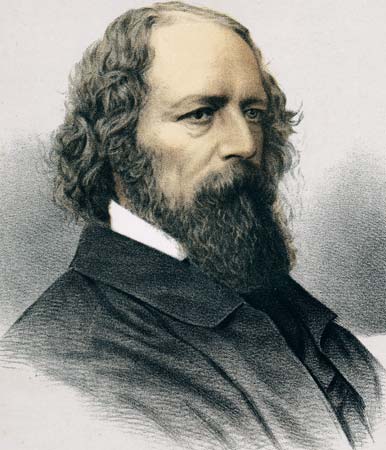The poem, “The Dying Christian to His Soul”, is a poem, which puts light on the speaker at the time of his death. Across many cultures and generations, people have been preoccupied with death. People fear it, and so they think of it often. According to Pope, it is the Christian faith that gives us the belief of the victory over death. This is why the poem is addressed especially to the Dying Christian, and not to his body, but rather to his soul.
The Dying Christian to His Soul Analysis
In this first stanza of the poem the dying Christian to his soul, the theme is pointed out by the use of the word “dying”. Obviously, this means the poem is stating that it will be about death and how it affects the person dying. Use of words such as “Nature”, “Cease”, “flying”, and “dying” mostly signify the setting of the poem. These words show that the speaker is outside of the real world, and is experiencing death first handedly and is disoriented by his surroundings.
It is in the second stanza that Pope starts to give readers the point of view and setting of his poem.
Hark I they whisper; angels say,
Sister Spirit, come away!
What is this absorbs me quite?
Steals my senses, shuts my sight,
Drowns my spirits, draws my breath?
Tell me, my soul, can this be death?
The number of times personal pronouns are used (I, me, and my) are quite numerous in this stanza, and thus we can assume this poem is from the first-person point of view. The setting can also be observed openly in this stanza. “Angel”, “Sister Spirit”, “absorbs”, “soul” and “death” are some of the words, which are used to convey the setting of the poem, which is after a person’s death.
It is in the third stanza that we come across the setting of the poem.
The world recedes; it disappears!
Heav’n opens on my ears! My ears
With sounds seraphic ring!
Lend, lend your wings! I mount! I fly!
O Grave! Where is thy victory?
O Death! Where is thy sting?
“Seraphic”, “Heav’n” and “wings” are words used by the poet to portray the thought of heaven and to confirm the setting of the poem as heaven. The tone changes in the last stanza, as the speaker seems happy as he is going to heaven. This is how the tone of the last stanza is changed.
The Dying Christian to His Soul Style
The central theme of the poem The Dying Christian to His Soul is “death” and all the imageries used by the poet look to revolve around it. In the first stanza when the reader visualizes these words it often gives the image of some sort of flame and a black background because it is the start of death.
The speaker does not know what is happening and has become disoriented because of his new surroundings. The words “pain”, “bliss” and “dying” in the fourth line are used to depict the poet’s happiness after his death, as he has been relieved from the sufferings of the mortal world.
The last line of the first stanza gives us terms as “Cease”, “Nature” and “life”. “Cease” means to stop when the reader looks at this term, they imagine that something has stopped, then when the reader reads on, the idioms “Nature” and “life” are read. This depicts that a certain life has ceased to live and nature has no control over it.
In the third line, the readers come across the speaker as confused. In lines four and five the readers get the idea of how the poet’s soul is taken away. On the last line, the words “soul” and “death” are used. The reader can picture that the speaker is talking to his soul, and asks if this can truly be dead.
Finally, the third stanza shows the true colors of the poem and has very vibrant imagery. “World”, “recedes”, “disappears” are words that depict that the speaker is finally ascending towards heaven. The second line describes that the speaker has finally reached heaven.
The word “Heav’n” is used in conjunction with “opens on my eyes!” Line four uses the idioms “lend”, “wings”, “mount” and “fly”. Finally, on the last two lines the expressions “O Grave! Where is thy victory?” and “O Death! Where is thy sting?” allow the reader to think of the speaker as satirizing death because it wasn’t a harsh experience as the speaker once thought it would be.
The Dying Christian to His Soul Tone
Almost all of the words used in the poem relate to death in one way or another and convey the thought to the reader that death is not supposed to be harsh and painful, but somewhat of an enjoyable and happy experience.
The rhythm of this poem ranges from iambic pentameter to anapestic heptameter. Most of the lines from every stanza start as iambic pentameter. As each stanza progresses, however, the rhythm of the poem starts to become more complex until it reaches its peak at anapestic heptameter. This is how the rhythm of the poem is organized.
The sound of the poem seems to be the same throughout the poem with the exception of line two in the first stanza. Most of the lines contain a masculine rhyme, which when the sounds have only one syllable. The exception to this is online two where it has alliteration, which is when consonant sounds at the beginning of the words are all repeated throughout the line.
Finally, the structure of the poem seems to be in free verse. The pattern of sounds is not very obvious and is very difficult to decipher and set into a category of structures. Most of the lines have different rhythms, different subjects, and different use of diction. This is the main reason why this poem is a free-verse poem. In addition, many literary devices such as “theme” or “alliterations” are used throughout the poem. To fully understand all of Pope’s poems, one must fully analyze it for all it’s worth.
Alexander Pope was one of the greatest poems of his generation. His poems cover many of the literary devices used in the English language and can be very complex to explain at times. Pope’s “The Dying Christian in his Soul” is an example where the readers come across his brilliance in the using of various literary devices.
Some online learning platforms provide certifications, while others are designed to simply grow your skills in your personal and professional life. Including Masterclass and Coursera, here are our recommendations for the best online learning platforms you can sign up for today.
The 7 Best Online Learning Platforms of 2022
- Best Overall: Coursera
- Best for Niche Topics: Udemy
- Best for Creative Fields: Skillshare
- Best for Celebrity Lessons: MasterClass
- Best for STEM: EdX
- Best for Career Building: Udacity
- Best for Data Learning: Pluralsight













